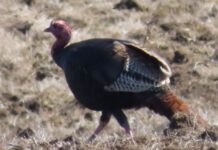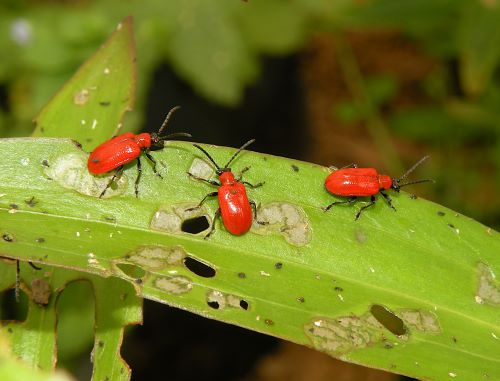A biologist from Carleton University is looking for the public’s support in documenting the presence of an invasive beetle this summer.
The lily leaf beetle is native to Eurasia, which includes Europe, Siberia and into northern China. Researchers having identified two main points for the introduction of the beetle in North America, the first being in Montreal, Quebec in the 1940s and the second in Cambridge, Massachusetts in 1992. Research suggests that they were most likely brought over from Europe on imported lily bulbs.
Since its introduction into Canada in 1940, the lily leaf beetle has spread all over the country. Populations have been found across Ontario, Quebec, the Atlantic Provinces, Manitoba, Alberta and Saskatchewan, with Regina having the most recent outbreak.
Associate professor in the department of biology at Carleton University, Naomi Cappuccino, has been studying the spread of the lily leaf beetle across Canada and into the United States for many years. She says the issue with letting the beetle spread is that they have started to attack native species of lilies, like the Canada Lily and Michigan Lily. Although it hasn’t been found on the Wood Lily yet, which is the floral emblem of Saskatchewan, Naomi says the beetles love it in the lab, so it is only a matter of time until they start wreaking havoc on those populations as well.
To help stop the spread of the lily leaf beetle, Naomi and her team have been trying to facilitate the release of bio-control agents into the areas across Canada where they have been documented. They have found a parasitic wasp that is specific to lily leaf beetles and poses no threat to the Canadian environment. The wasp actually lays its eggs in the beetle larvae, causing more wasps to emerge from the cocoon rather than beetles. “They eat them from the inside out basically,” Naomi says.
The wasps are relatively difficult to come by as they are sourced by one of Naomi’s colleagues in Europe. Naomi says they typically receive about 500 every year, which they distribute across the country in places where the lily leaf beetle has been noted. In 2010, they released about 50 wasps in Ottawa at the Experimental Farm to help control the lily beetle population in the area. The wasps have been released in about 10 sites across Canada over the past decade.
Naomi is currently on sabbatical and was hoping to travel across the country this year, documenting how the release of the wasps have affected the lily leaf beetle population. Unfortunately, due to the pandemic she has been unable to travel, and so she is looking to citizen scientists to help her track the efficacy of the bio-control agents.
She has created a short survey through her website asking people to document the presence of the lily leaf beetle in their area. She has also set out a challenge for kids and adults alike to send them lily leaf beetle larvae so that they can see if it has been parasitized. This is a North America wide survey and Naomi says any participation would be extremely helpful so they can map out where they have released the wasps and compare it to how many lily leaf beetles are now present in the area. “We’ll be looking basically everywhere in North America that people want to tell us – do they still have a problem with the lily leaf beetle, or in the past fives years has it declined a lot?” she says. “Give us that kind of information and we’ll just correlate it with where we’ve done the releases and see if they match.”
For more information on this project and to fill out the survey, visit www.lilybeetletracker.weebly.com.






